Abstract
(1) Infection of mice with Trichinella spiralis induced the appearance in serum of two homocytotropic antibodies that could be distinguished by their biological and chromatographic behaviour.
(2) Biologically, the antibodies could be distinguished by their ability to persist in homologous skin after passive transfer. One antibody was able to induce PCA only when a short latent period was used, whereas the other was able to induce PCA even after 72 hours.
(3) They could also be separated when antiserum was passed through a DEAE-cellulose column. Antibody present in the first eluates was able to induce PCA only if a short latent period was used whereas antibody present in the subsequent eluates was able to induce PCA 72 hours after sensitization.
(4) Both antibodies appeared in the circulation 5 weeks after infection and reached their highest levels around the 9th week. Later, the 72-hour PCA antibody disappeared from the serum in some animals, whereas the 4-hour PCA antibody remained.
(5) Re-infection resulted in an increase in the levels of both antibodies.
(6) In animals subjected to repeated reinfections the reagin-like antibody either decreased or disappeared from the serum. On the other hand, the 4-hour PCA antibody increased.
(7) Immunization with `dead' T. spiralis antigen led to the appearance of both antibodies in the serum. A second dose of antigen resulted in increases in the levels of both antibodies, but further injections resulted in a high level of 4-hour PCA antibody and in the disappearance of the reagin-like antibody.
Full text
PDF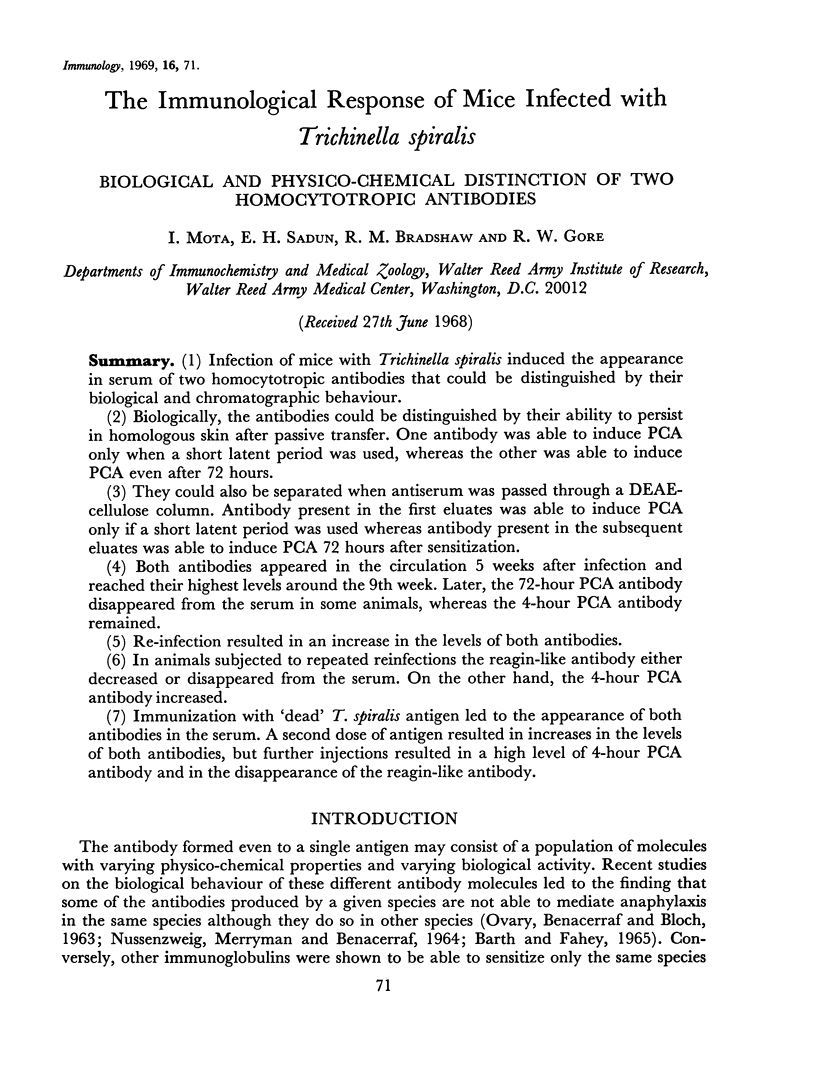
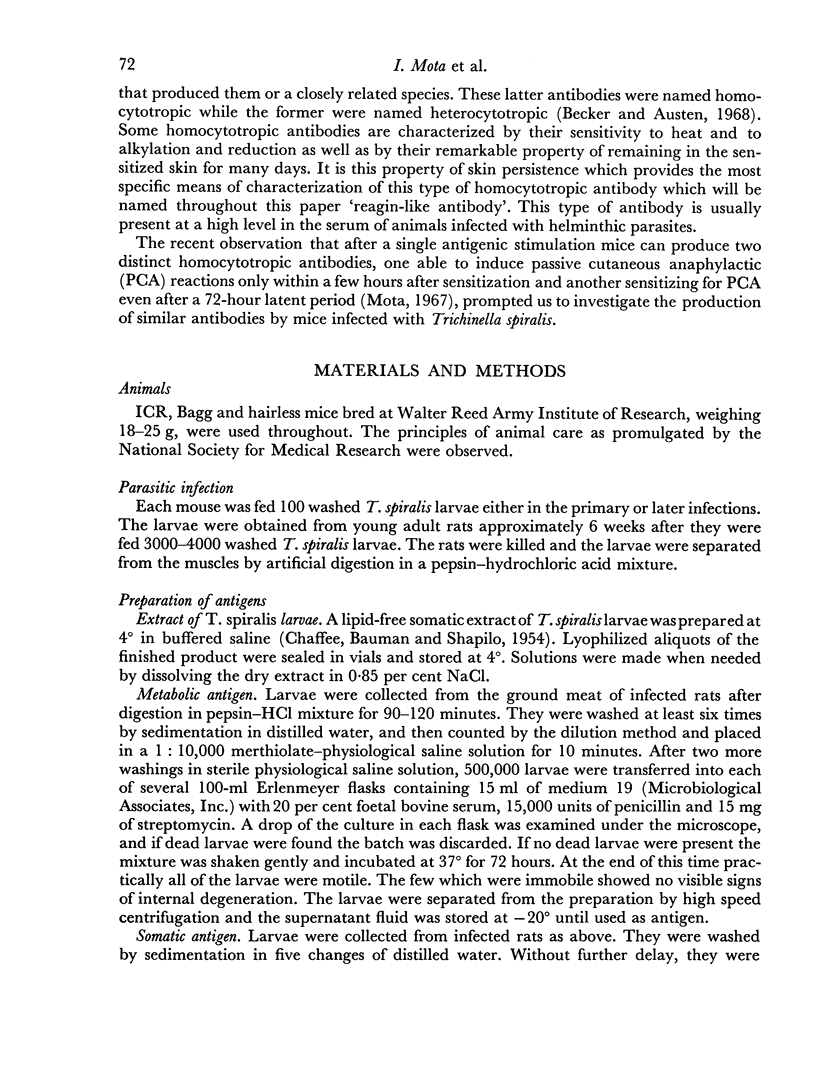
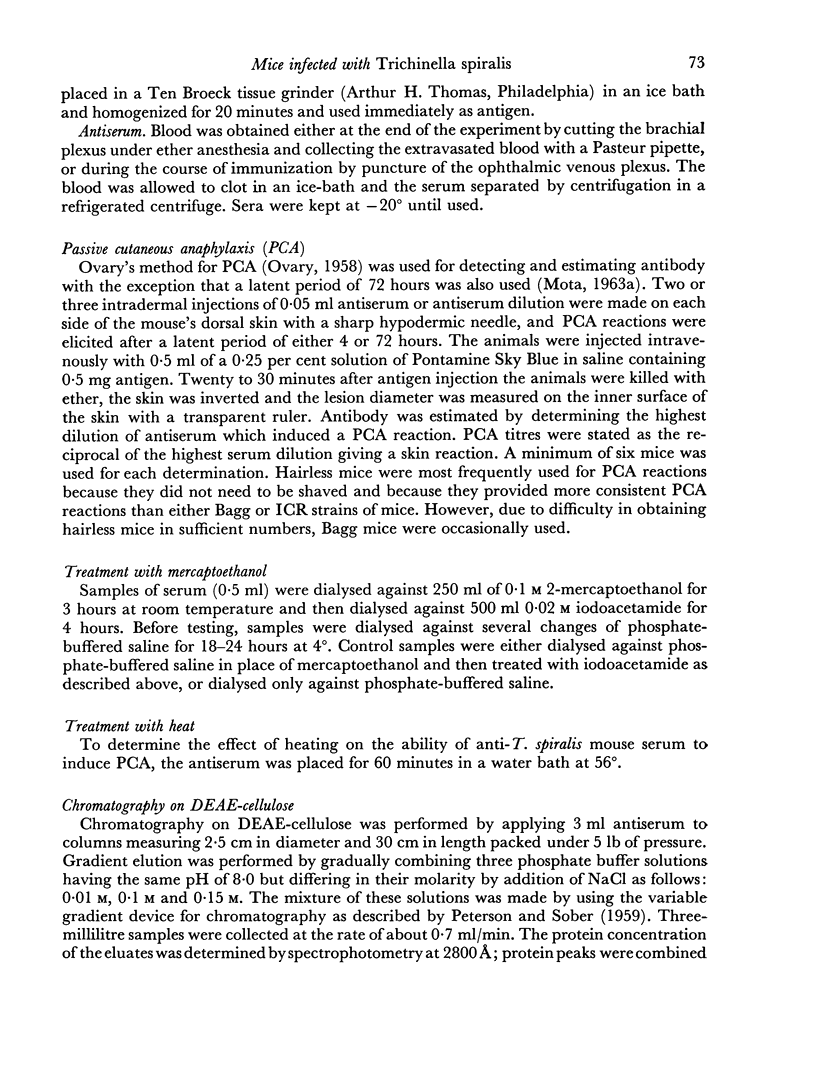
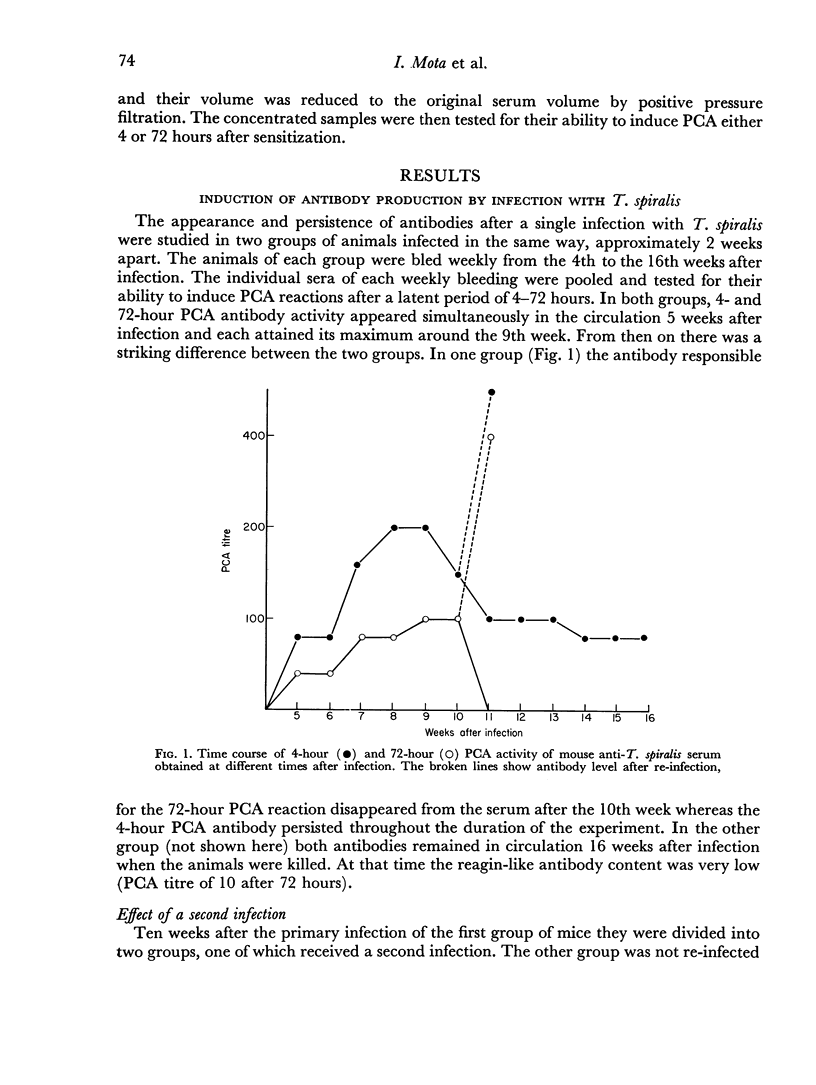
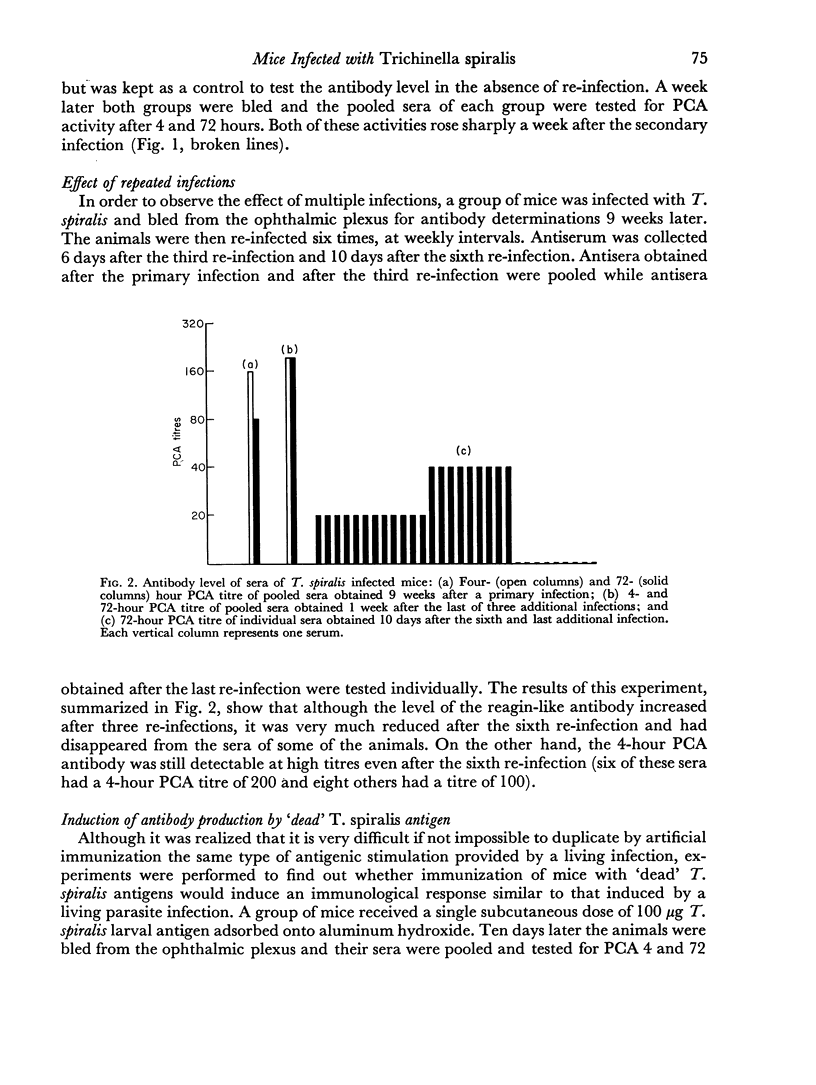
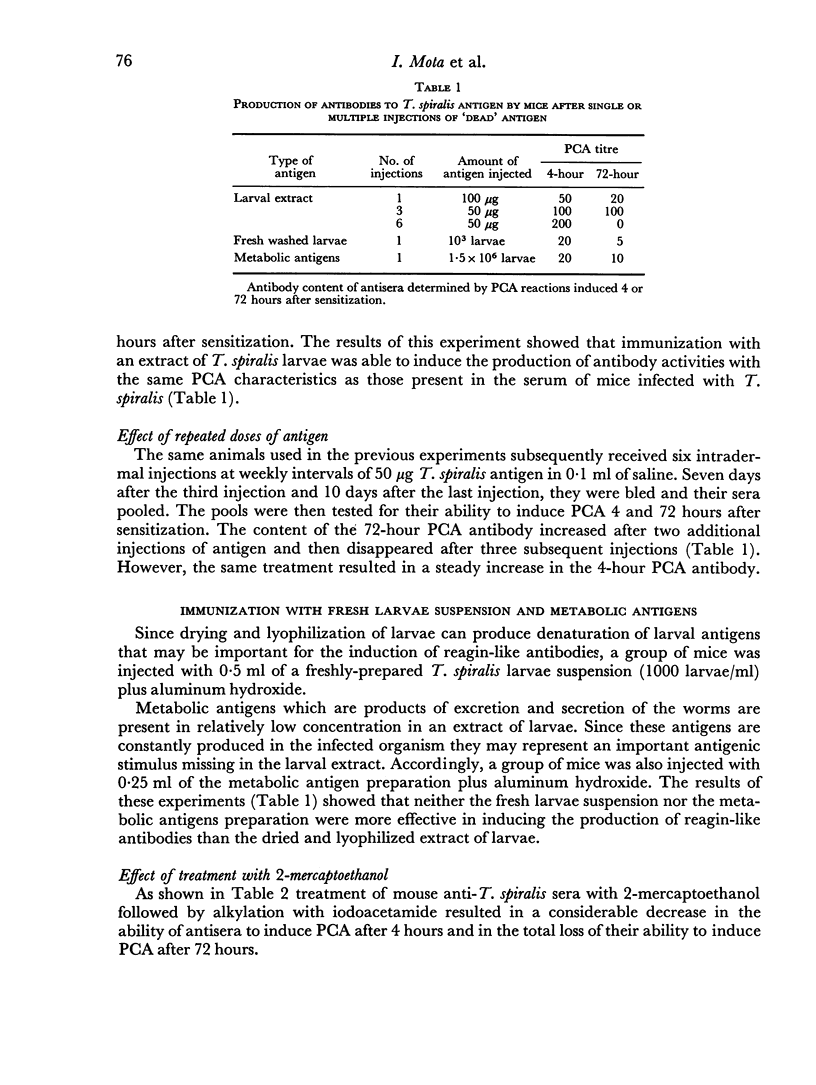
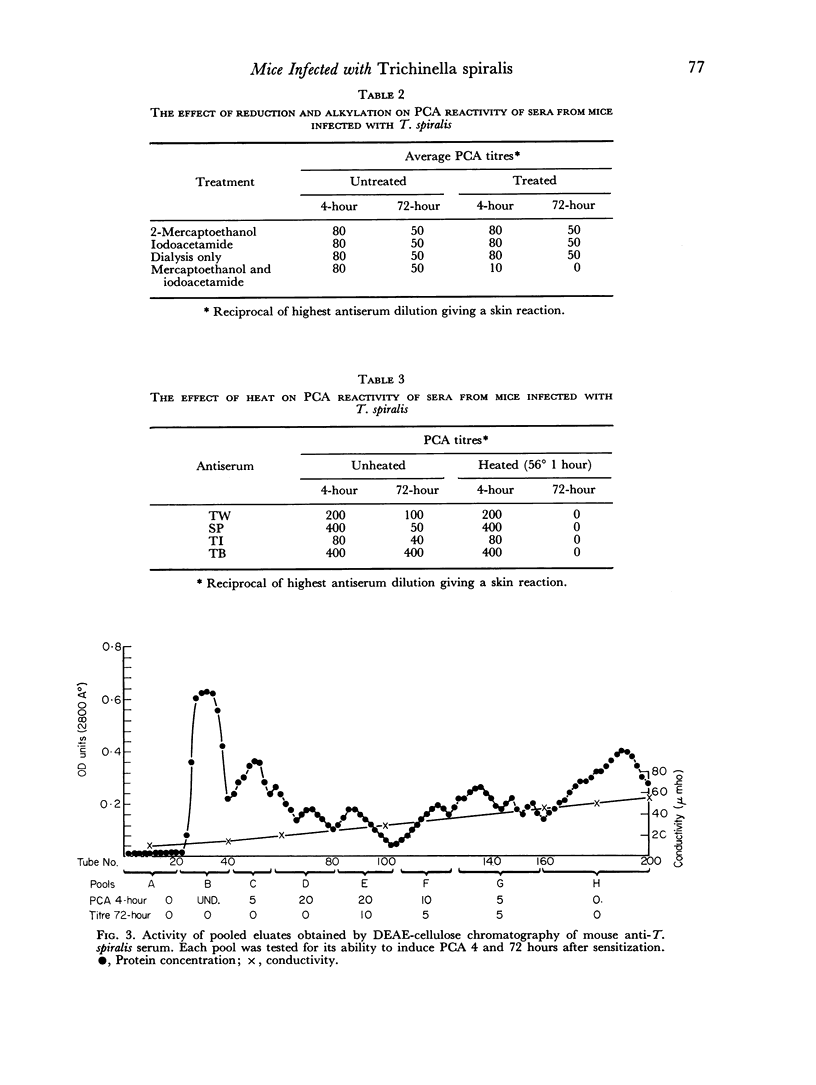
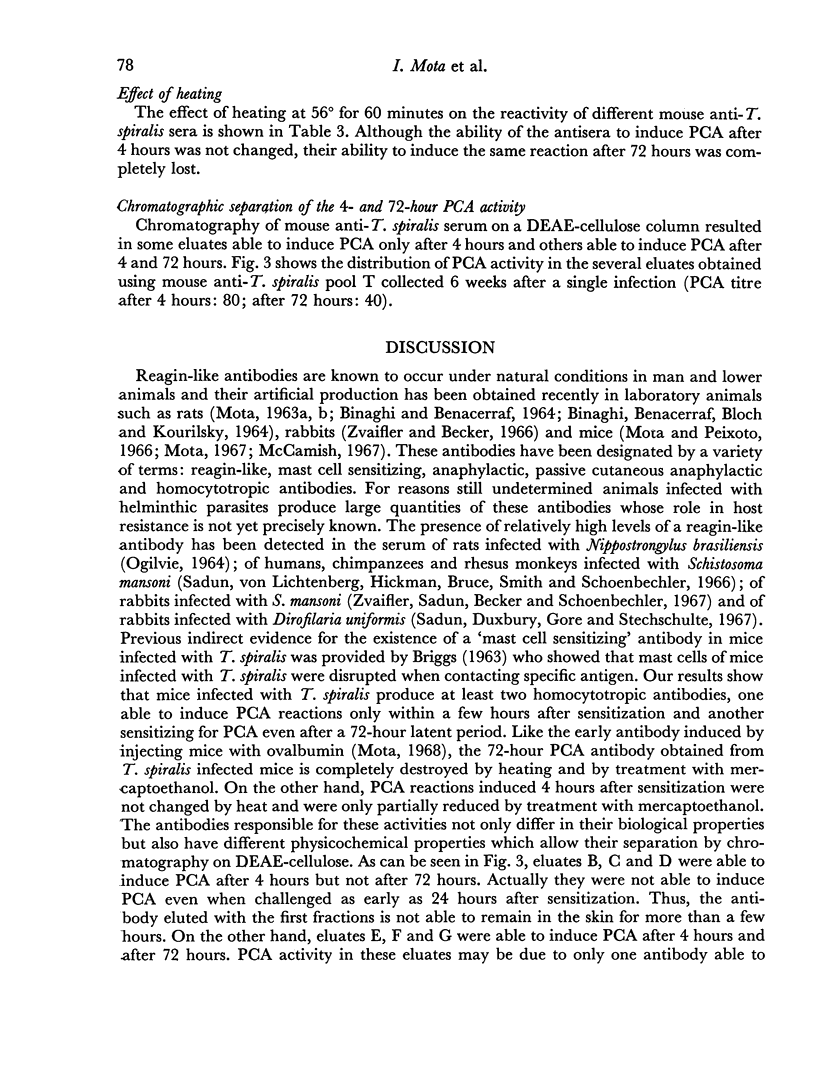

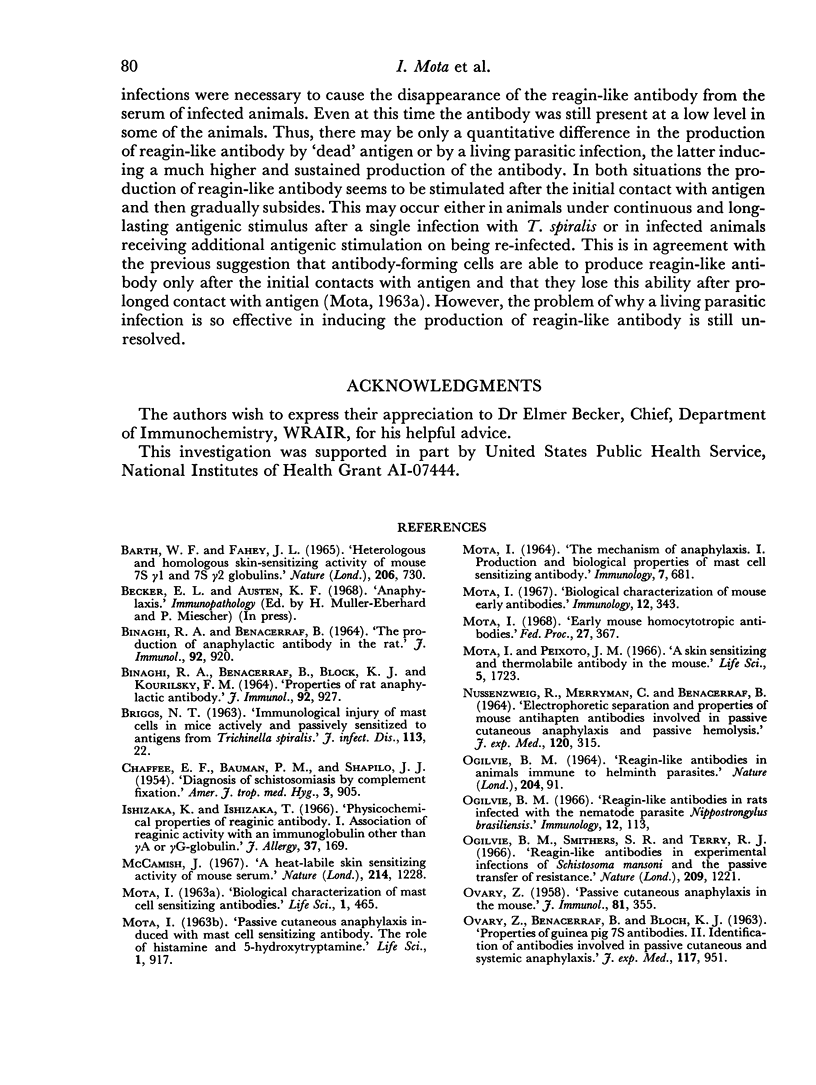
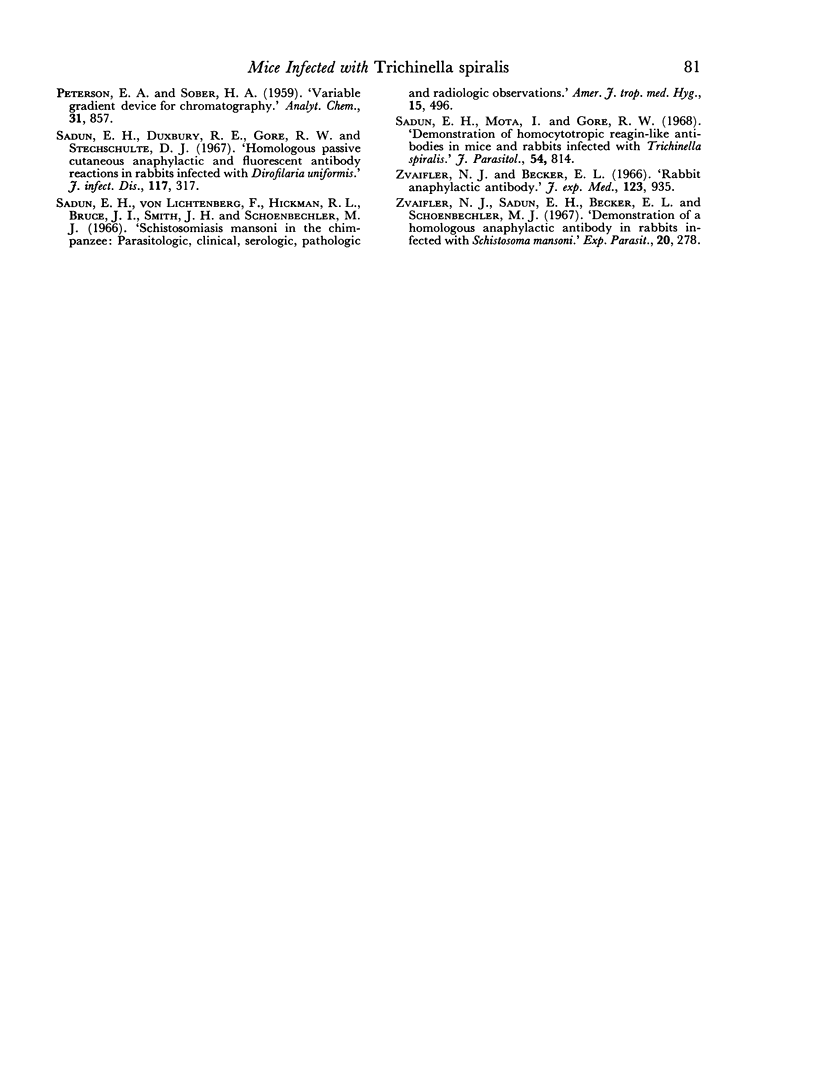
Selected References
These references are in PubMed. This may not be the complete list of references from this article.
- BINAGHI R. A., BENACERRAF B., BLOCH K. J., KOURILSKY F. M. PROPERTIES OF RAT ANAPHYLACTIC ANTIBODY. J Immunol. 1964 Jun;92:927–933. [PubMed] [Google Scholar]
- BINAGHI R. A., BENACERRAF B. THE PRODUCTION OF ANAPHYLACTIC ANTIBODY IN THE RAT. J Immunol. 1964 Jun;92:920–926. [PubMed] [Google Scholar]
- BRIGGS N. T. IMMUNOLOGICAL INJURY OF MAST CELLS IN MICE ACTIVELY AND PASSIVELY SENSITIZED TO ANTIGENS FROM TRICHINELLA SPIRALIS. J Infect Dis. 1963 Jul-Aug;113:22–32. doi: 10.1093/infdis/113.1.22. [DOI] [PubMed] [Google Scholar]
- Barth W. F., Fahey J. L. Heterologous and homologous skin-sensitizing activity of mouse 7S gamma 1- and 7S gamma 2-globulins. Nature. 1965 May 15;206(985):730–731. doi: 10.1038/206730a0. [DOI] [PubMed] [Google Scholar]
- CHAFFEE E. F., BAUMAN P. M., SHAPILO J. J. Diagnosis of schistosomiasis by complement-fixation. Am J Trop Med Hyg. 1954 Sep;3(5):905–913. doi: 10.4269/ajtmh.1954.3.905. [DOI] [PubMed] [Google Scholar]
- Ishizaka K., Ishizaka T. Physicochemical properties of reaginic antibody. 1. Association of reaginic activity with an immunoglobulin other than gammaA- or gammaG-globulin. J Allergy. 1966 Mar;37(3):169–185. doi: 10.1016/0021-8707(66)90091-8. [DOI] [PubMed] [Google Scholar]
- MOTA I. Biological characterization of "mast cell sensitizing" antibodies. Life Sci. 1963 Jul;(7):465–474. doi: 10.1016/0024-3205(63)90134-6. [DOI] [PubMed] [Google Scholar]
- MOTA I. PASSIVE CUTANEOUS ANAPHYLAXIS INDUCED WITH MAST CELL-SENSITIZING ANTIBODY. THE ROLE OF HISTAMINE AND 5-HYDROXYTRYPTAMINE. Life Sci. 1963 Dec;12:917–927. doi: 10.1016/0024-3205(63)90060-2. [DOI] [PubMed] [Google Scholar]
- MOTA I. THE MECHANISM OF ANAPHYLAXIS. I. PRODUCTION AND BIOLOGICAL PROPERTIES OF 'MAST CELL SENSITIZING' ANTIBODY. Immunology. 1964 Nov;7:681–699. [PMC free article] [PubMed] [Google Scholar]
- McCamish J. A heat-labile skin sensitizing activity of mouse serum. Nature. 1967 Jun 17;214(5094):1228–1229. doi: 10.1038/2141228a0. [DOI] [PubMed] [Google Scholar]
- Mota I. Biological characterization of mouse 'early' antibodies. Immunology. 1967 Mar;12(3):343–348. [PMC free article] [PubMed] [Google Scholar]
- Mota I., Peixoto J. M. A skin-sensitizing and thermolabile antibody in the mouse. Life Sci. 1966 Sep;5(18):1723–1728. doi: 10.1016/0024-3205(66)90108-1. [DOI] [PubMed] [Google Scholar]
- NUSSENZWEIG R. S., MERRYMAN C., BENACERRAF B. ELECTROPHORETIC SEPARATION AND PROPERTIES OF MOUSE ANTIHAPTEN ANTIBODIES INVOLVED IN PASSIVE CUTANEOUS ANAPHYLAXIS AND PASSIVE HEMOLYSIS. J Exp Med. 1964 Aug 1;120:315–328. doi: 10.1084/jem.120.2.315. [DOI] [PMC free article] [PubMed] [Google Scholar]
- OGILVIE B. M. REAGIN-LIKE ANTIBODIES IN ANIMALS IMMUNE TO HELMINTH PARASITES. Nature. 1964 Oct 3;204:91–92. doi: 10.1038/204091a0. [DOI] [PubMed] [Google Scholar]
- OVARY Z., BENACERRAF B., BLOCH K. J. Properties of guinea pig 7S antibodies. II. Identification of antibodies involved in passive cutaneous and systemic anaphylaxis. J Exp Med. 1963 Jun 1;117:951–964. doi: 10.1084/jem.117.6.951. [DOI] [PMC free article] [PubMed] [Google Scholar]
- OVARY Z. Passive cutaneous anaphylaxis in the mouse. J Immunol. 1958 Oct;81(4):355–357. [PubMed] [Google Scholar]
- Ogilvie B. M. Reagin-like antibodies in rats infected with the nematode parasite Nippostrongylus brasiliensis. Immunology. 1967 Feb;12(2):113–131. [PMC free article] [PubMed] [Google Scholar]
- Ogilvie B. M., Smithers S. R., Terry R. J. Reagin-like antibodies in experimental infections of Schistosoma mansoni and the passive transfer of resistance. Nature. 1966 Mar 19;209(5029):1221–1223. doi: 10.1038/2091221a0. [DOI] [PubMed] [Google Scholar]
- Sadun E. H., Duxbury R. E., Gore R. W., Stechschulte D. J. Homologous passive cutaneous anaphylactic and fluorescent antibody reactions in rabbits infected with Dirofilaria uniformis. J Infect Dis. 1967 Oct;117(4):317–326. doi: 10.1093/infdis/117.4.317. [DOI] [PubMed] [Google Scholar]
- Sadun E. H., Mota I., Gore R. W. Demonstration of homocytotropic reaginlike antibodies in mice and rabbits infected with Trichinella spiralis. J Parasitol. 1968 Aug;54(4):814–821. [PubMed] [Google Scholar]
- Sadun E. H., Von Lichtenberg F., Hickman R. L., Bruce J. I., Smith J. H., Schoenbechler M. J. Schistosomiasis mansoni in the chimpanzee: parasitologic, clinical, serologic, pathologic and radiologic observations. Am J Trop Med Hyg. 1966 Jul;15(4):496–506. doi: 10.4269/ajtmh.1966.15.496. [DOI] [PubMed] [Google Scholar]
- Zvaifler N. J., Becker E. L. Rabbit anaphylactic antibody. J Exp Med. 1966 May 1;123(5):935–950. doi: 10.1084/jem.123.5.935. [DOI] [PMC free article] [PubMed] [Google Scholar]


